In the middle of last year we saw the Hyundai Santa Fe receive a substantial renovation a mere two years after its release, causing some surprise even for the extent and depth of the modifications. Not only did it get a new “face”, as the interior gained a new center console and other “treats” such as a 100% digital instrument panel and better quality materials.
More surprising was knowing that this premature restyling was accompanied by a new platform (only identified by the brand as third generation) that opened the doors to the electrification of Santa Fe, generating two hybrid proposals: HEV (conventional hybrid, here under test) and PHEV ( plug-in hybrid that will arrive later).
The national range is thus made up of two distinct engines, hybrid and Diesel, but which here are, curiously, equivalent in price (both with the Vanguard + Luxury Pack level, the highest) and performance, inviting a direct confrontation between the two.
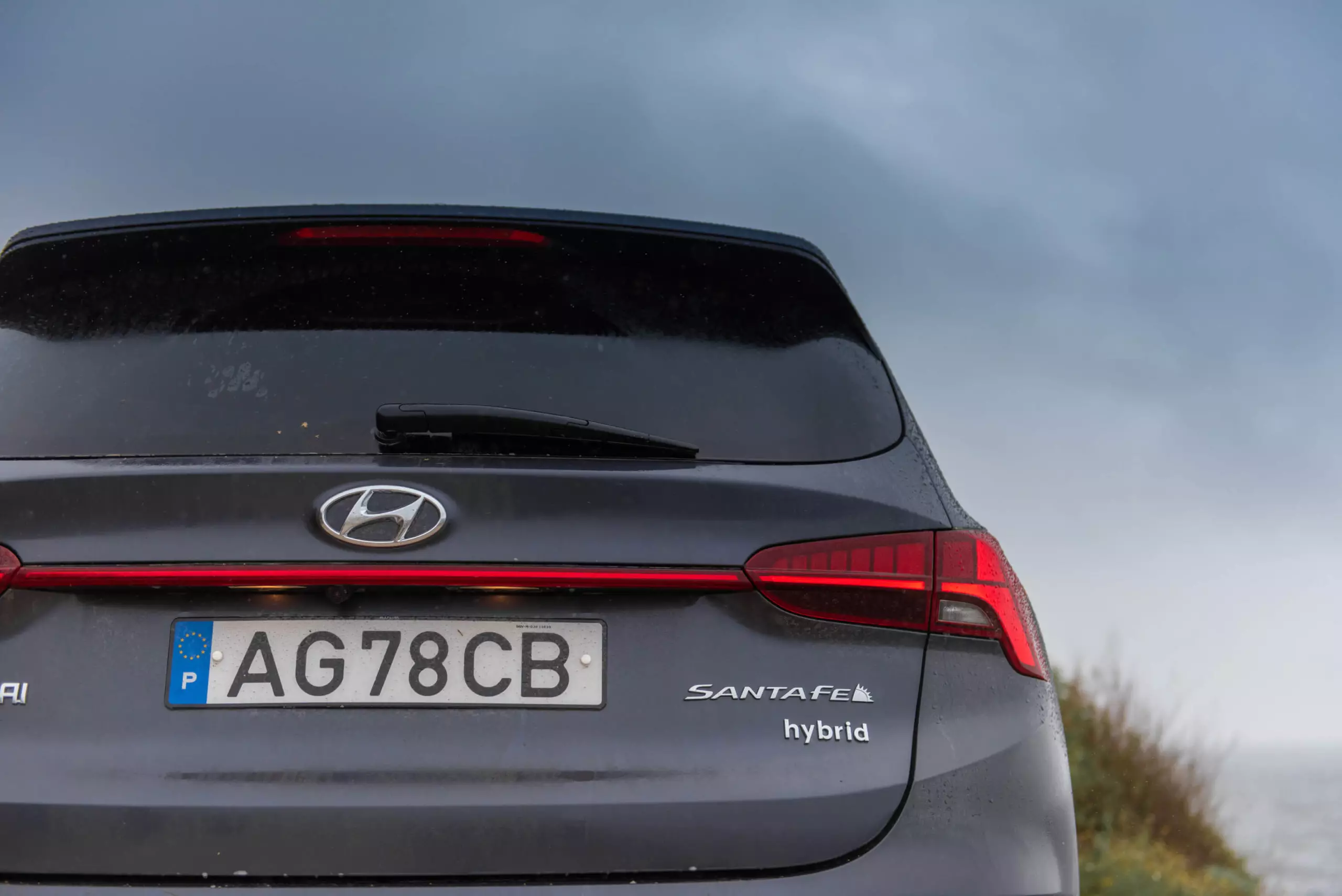
Does the engine “sec. XXI” has what it takes to dethrone Diesel, the default engine and traditionally the most suitable for these large SUVs and seven seats?
Hybrid vs Diesel
On paper the Santa Fe HEV appears to have a head start over the Santa Fe 2.2 CRDi. More powerful (230 hp against 202 hp), it also has lower CO2 emissions (153 g/km against 165 g/km). However, the Diesel responds with performance numbers on par with the hybrid, losing just 0.1s in the classic 0-100 km/h (9.0s against 8.9s), but surpassing the HEV at top speed (205 km/h against 187 km/h).
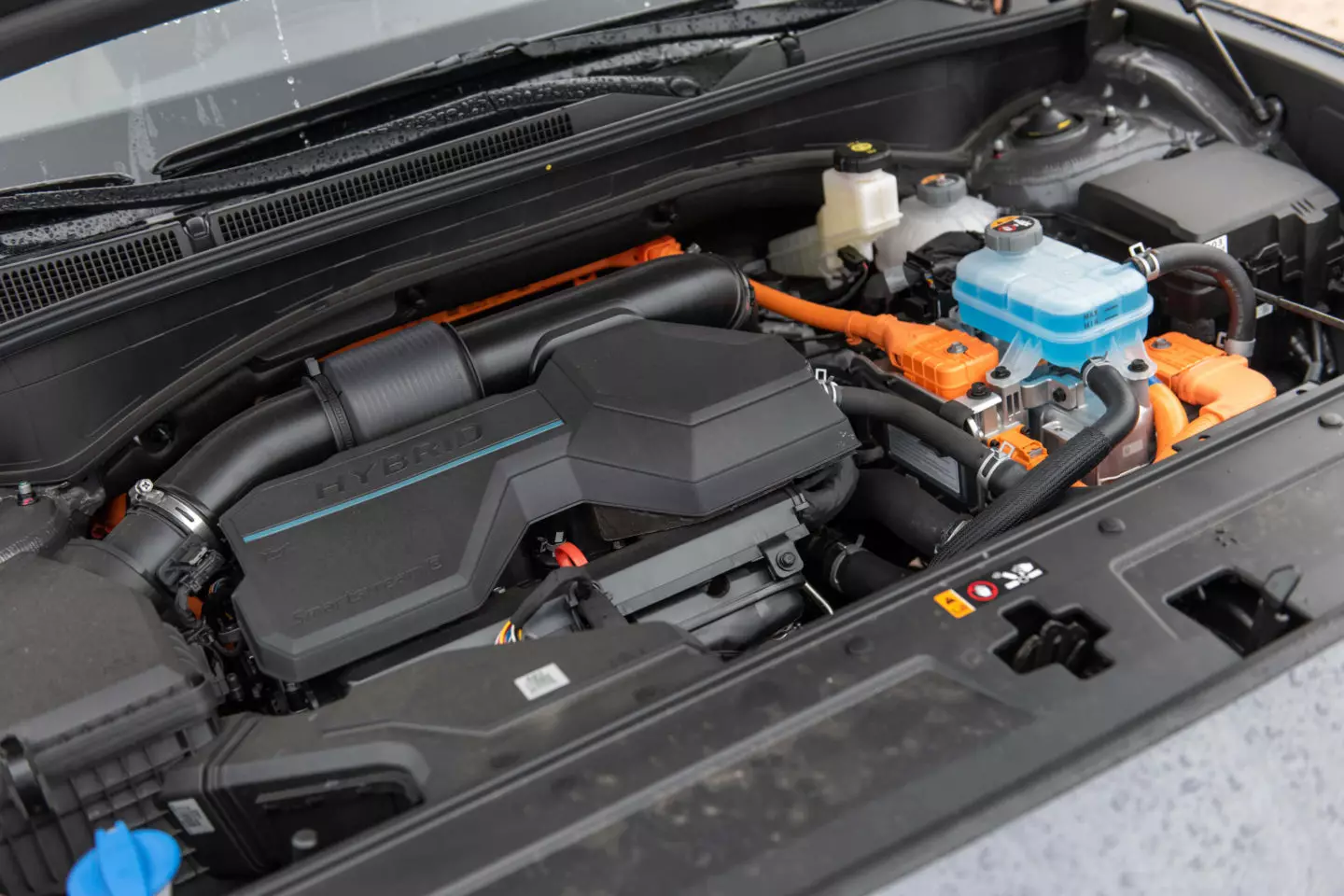
Orange cables are not deceiving. This is the Santa Fe HEV, the hybrid.
Obviously they are not “racing” SUVs, but the Diesel's good performance turns out to be a standout (the retakes are also vigorous) making the best possible use of its superior torque of 440 Nm (350 Nm of maximum torque combined in the HEV) and the eight-speed dual-clutch gearbox, which in the HEV has two speeds less (six in total) and is of the torque converter type (both are front-wheel drive).
However, the numbers only tell part of the story. Due to the intrinsic characteristics of each engine, the numbers of each engine are delivered differently.
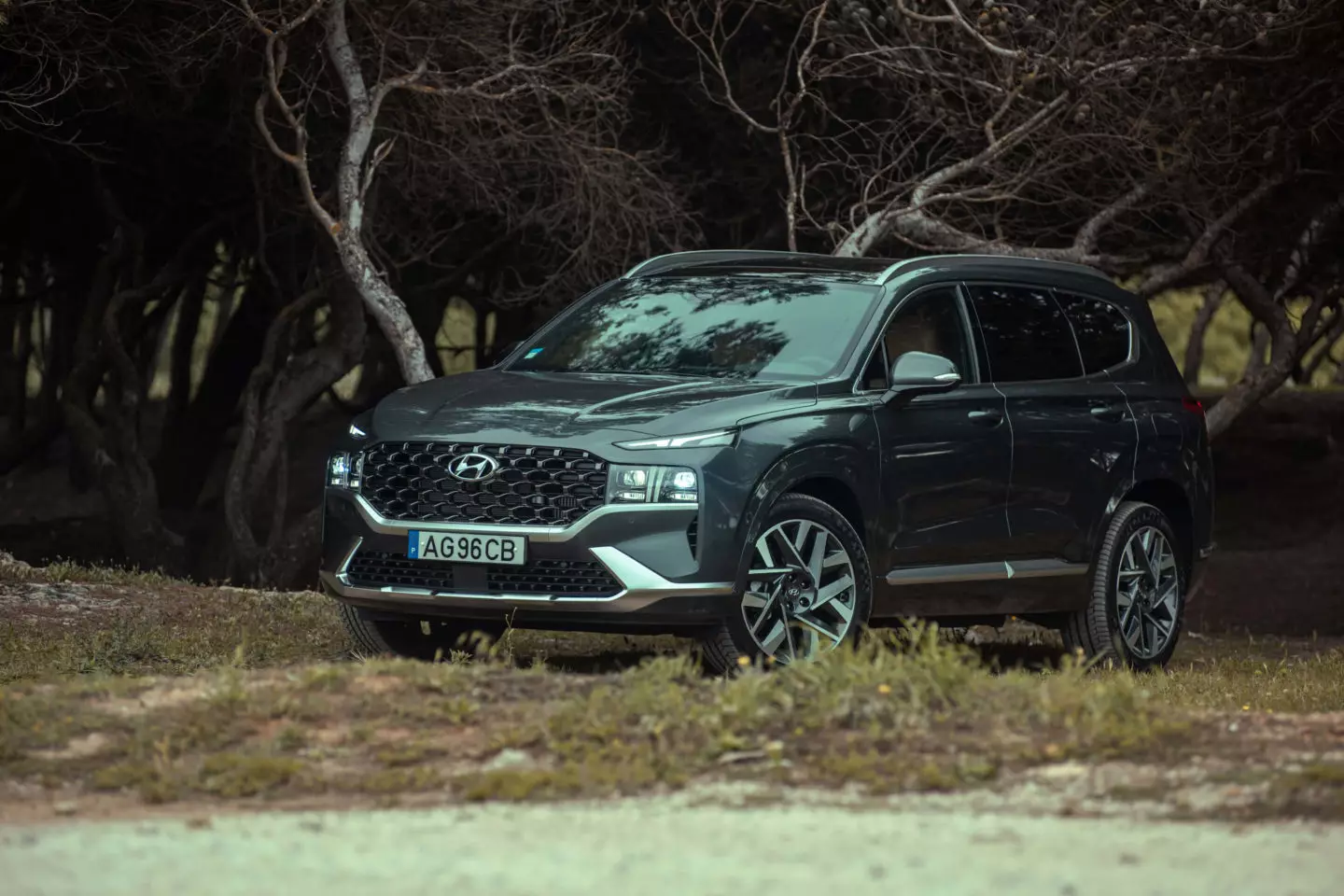
The restyling gave a new face to Santa Fe, highlighting the new and more expansive grille, joining the headlights; and the new luminous "T" signature.
At Santa Fe HEV, the role of the 44.2 kW (60 hp) electric motor — powered by a 1.49 kWh battery — and its 264 Nm, available right from the start, to aid the (quiet) ) 1.6 T-GDI petrol 180 hp that ensures the Hyundai SUV an always ready response to the accelerator pedal.
Everything we ask of you is also always accompanied by a very high level of refinement, without hesitation and vibrations, with a smoothness that is more readily associated with… electric vehicles. To this end, the harmonious communication between the combustion engine, electric motor and transmission trio greatly contributes.

An experience impossible to replicate in 2.2 CRDi. If we step out of HEV and into 2.2 CRDi, putting it in gear, we have to admit that there is an initial “shock” — where has the smooth running gone?
There is more noise (and being Diesel, far from being the most pleasant), more vibrations (although very well filtered overall), with the greatest contrast to HEV happening at starts and at low speeds. Unlike the hybrid's smoothness and silence, in the case of the Diesel there seems to be a greater resistance to inertia, with a dragging effect on the transmission, as if the connection between engine and gearbox took longer to be properly completed.
We have to get out of the urban stop-and-go scenario for 2.2 CRDi to show its “fine” side. Ongoing, the Hyundai Santa Fe's innate high refinement comes to the fore, even for the Diesel, with the gearbox allowing for almost imperceptible gear changes and the engine noise turning to a discreet hum. In fact, the further we go the more it becomes noticeable how good this engine and transmission are for each other.
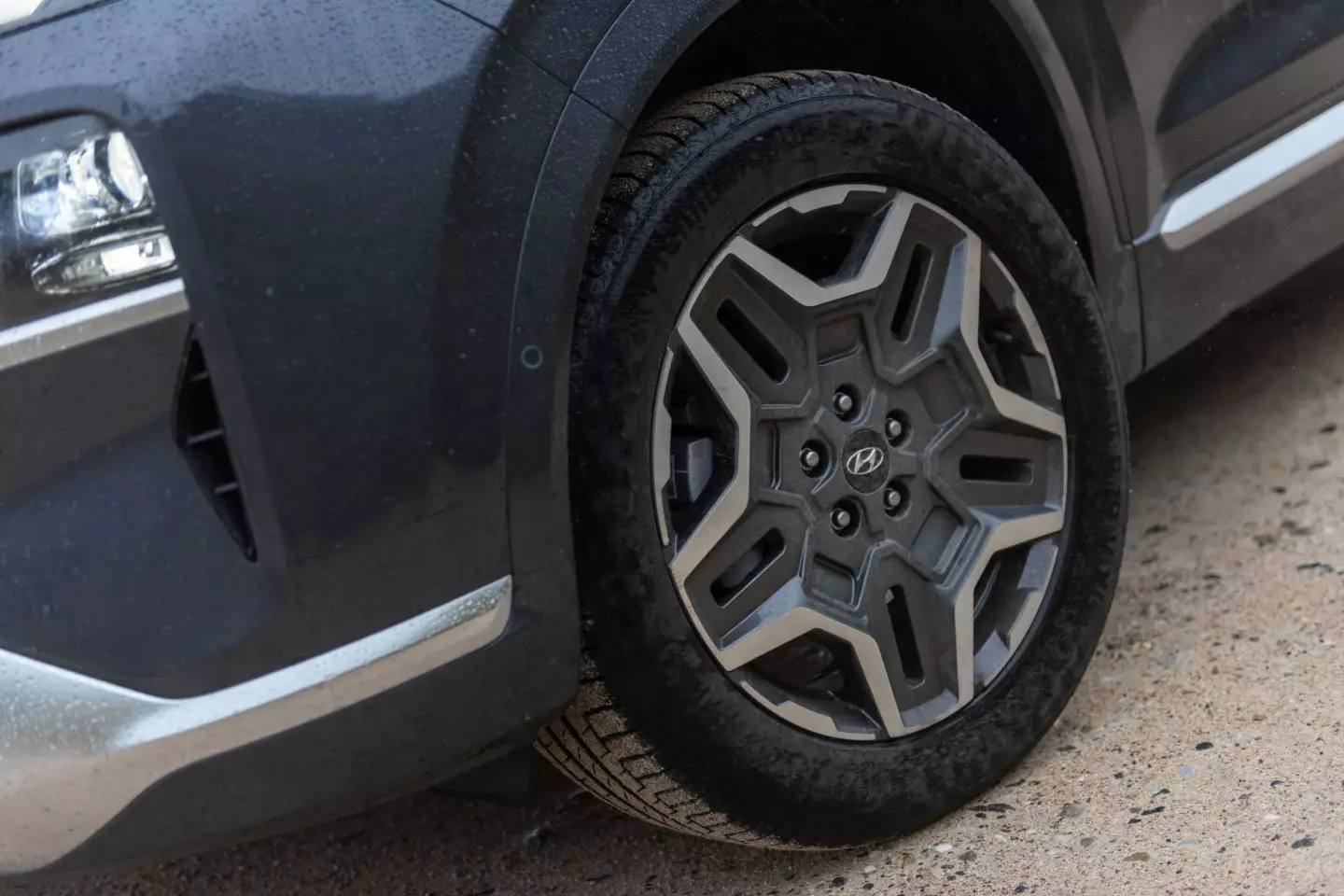
Although both units have the same level of equipment, there are some differences: the Santa Fe HEV comes with 19" wheels,…
Even on the motorway, at higher cruising speeds, refinement remains high in the 2.2 CRDi, where rolling, mechanical and aerodynamic noises are quite contained — long family trips promise to be a restful one aboard the Hyundai Santa Fe, regardless of the chosen engine.
Distinct personalities
The differences between the two versions could come down to their engines, but there is more. These are not just mechanical, but expand to your handling and handling.
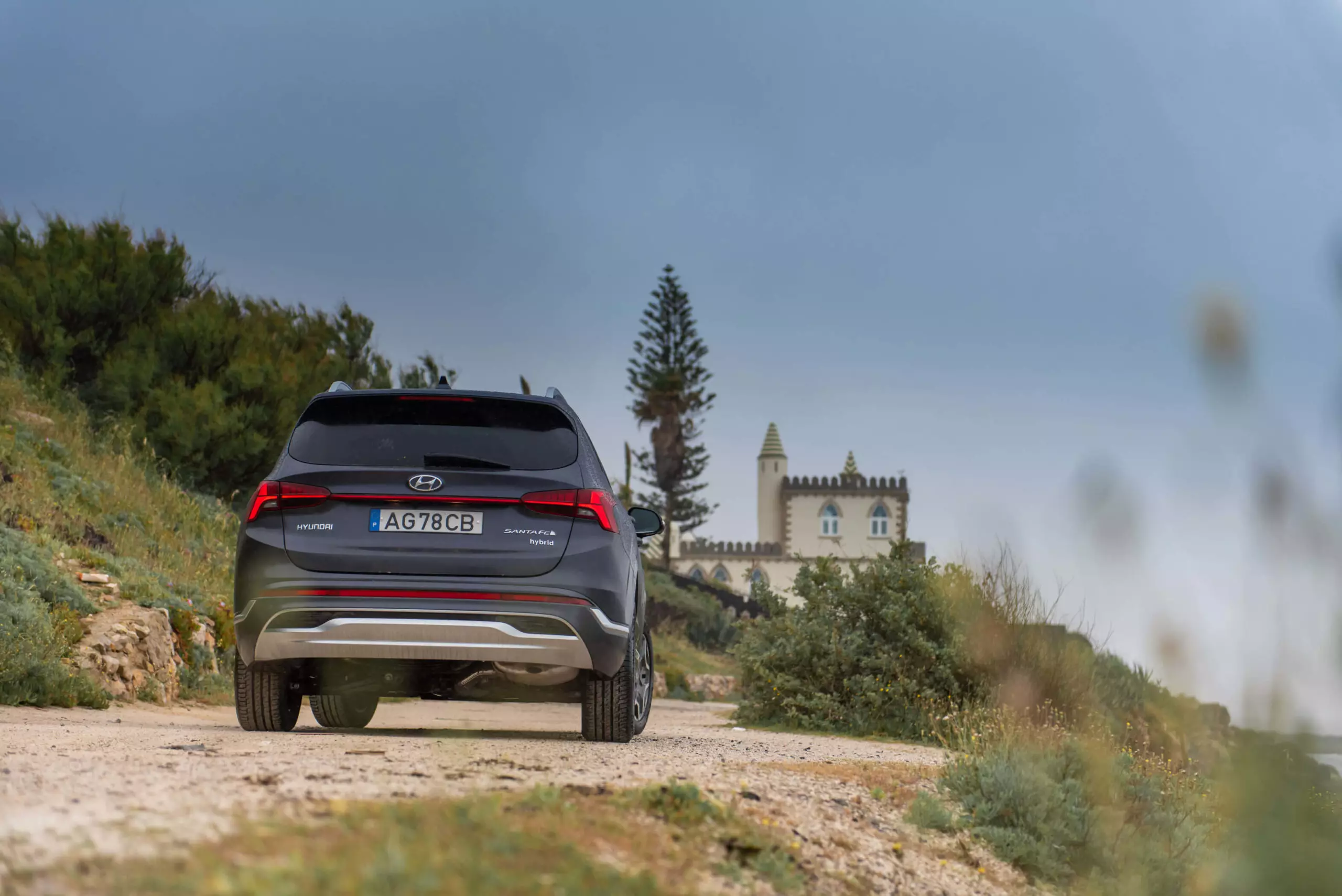
If ride comfort unites the two Hyundai Santa Fe, the 2.2 CRDi is the one that most convinces when we explore its chassis in a more determined way. It's more precise and controlled, with the suspension better containing body movement, and the steering is more consistent in weight and strength, giving those behind the wheel more confidence when approaching corners — matching the experience we've had with the Santa Fe pre-restyling.
The Santa Fe HEV is more affected by the irregularities of the asphalt, the controls are lighter (a characteristic most appreciated in urban driving) and the feel of the brake pedal is not so well achieved (a common characteristic in many hybrid vehicles that have to play between regenerative and hydraulic braking). Despite the greater lightness of the HEV controls, the 2.2 CRDi is the one that seems to be the lightest vehicle when in motion (only 10 kg separate the two models) and “connected” to the driver.
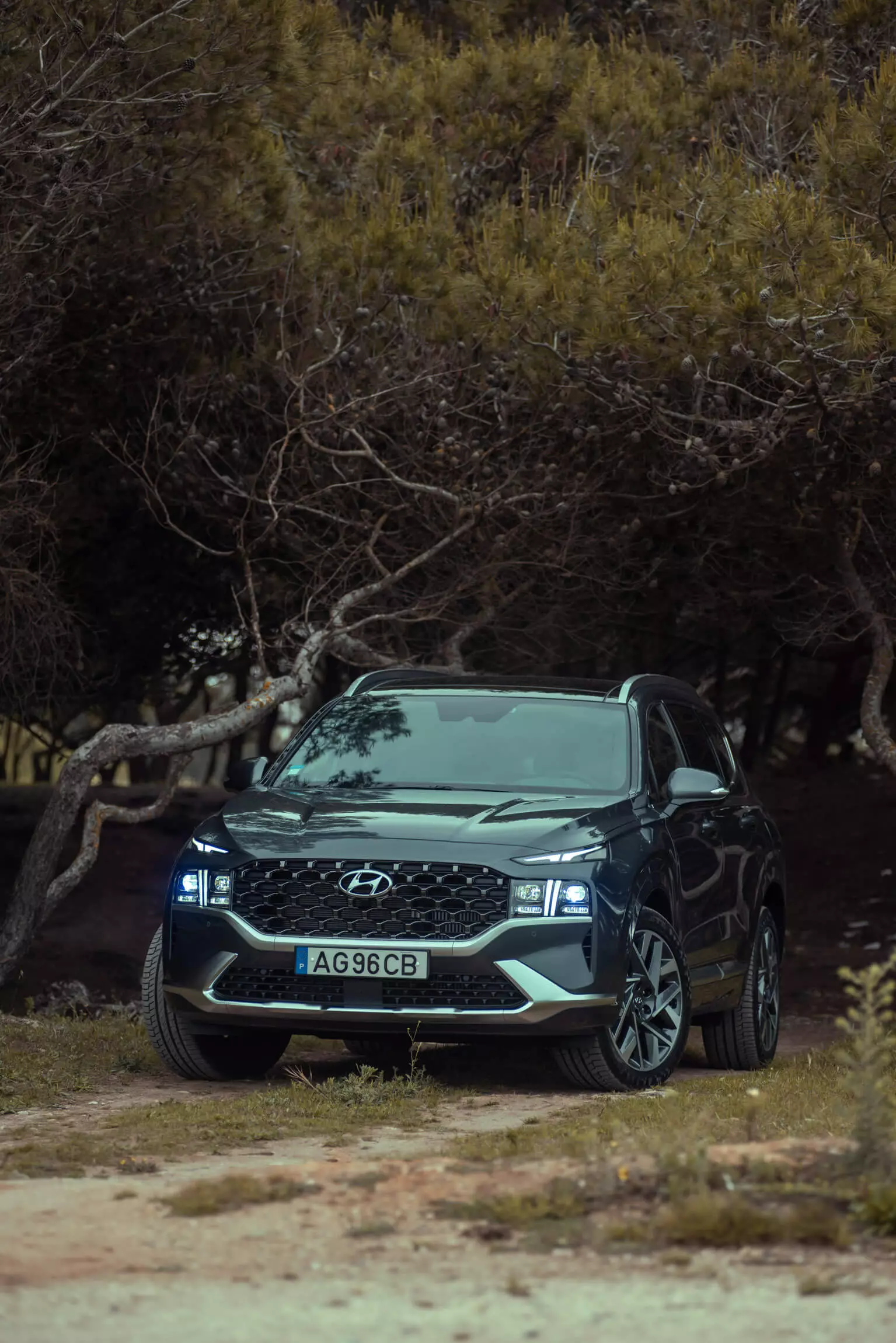
If you don't mind less refined driving, the 2.2 CRDi is the Santa Fe to have for those who enjoy driving the most — the same conclusion we reached after driving the new, smaller Hyundai Tucson, oddly enough.
That said, Hyundai's “family size” SUV is always very well behaved, proving stable at high speeds and safe and predictable on rougher roads. Common to both is also the fact that they don't like to be brusquely rushed, largely because of the transmissions, which seem to lose their predictive “powers” and smooth action in a more aggressive driving. Both invite a smoother ride, no matter which driving mode you choose, even when the pace increases.
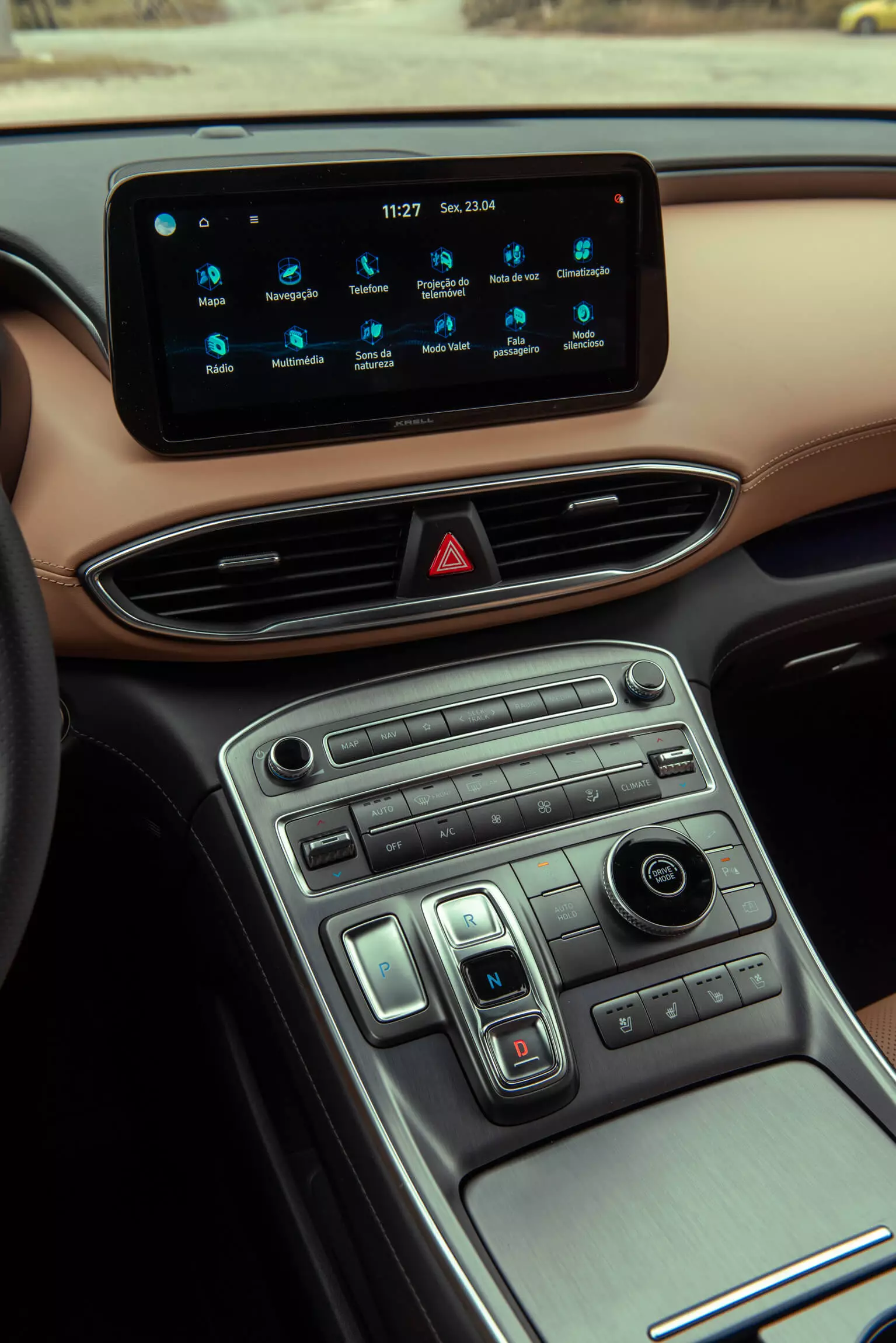
Which Santa Fe is right for me?
If there doesn't seem to be much to separate them in terms of price (just over 60,000 euros for both) and performance, to the HEV's greater refinement (especially in urban driving), the 2.2 CRDi responds with a more assertive driving experience, but HEV still has a trump up its sleeve: consumption.
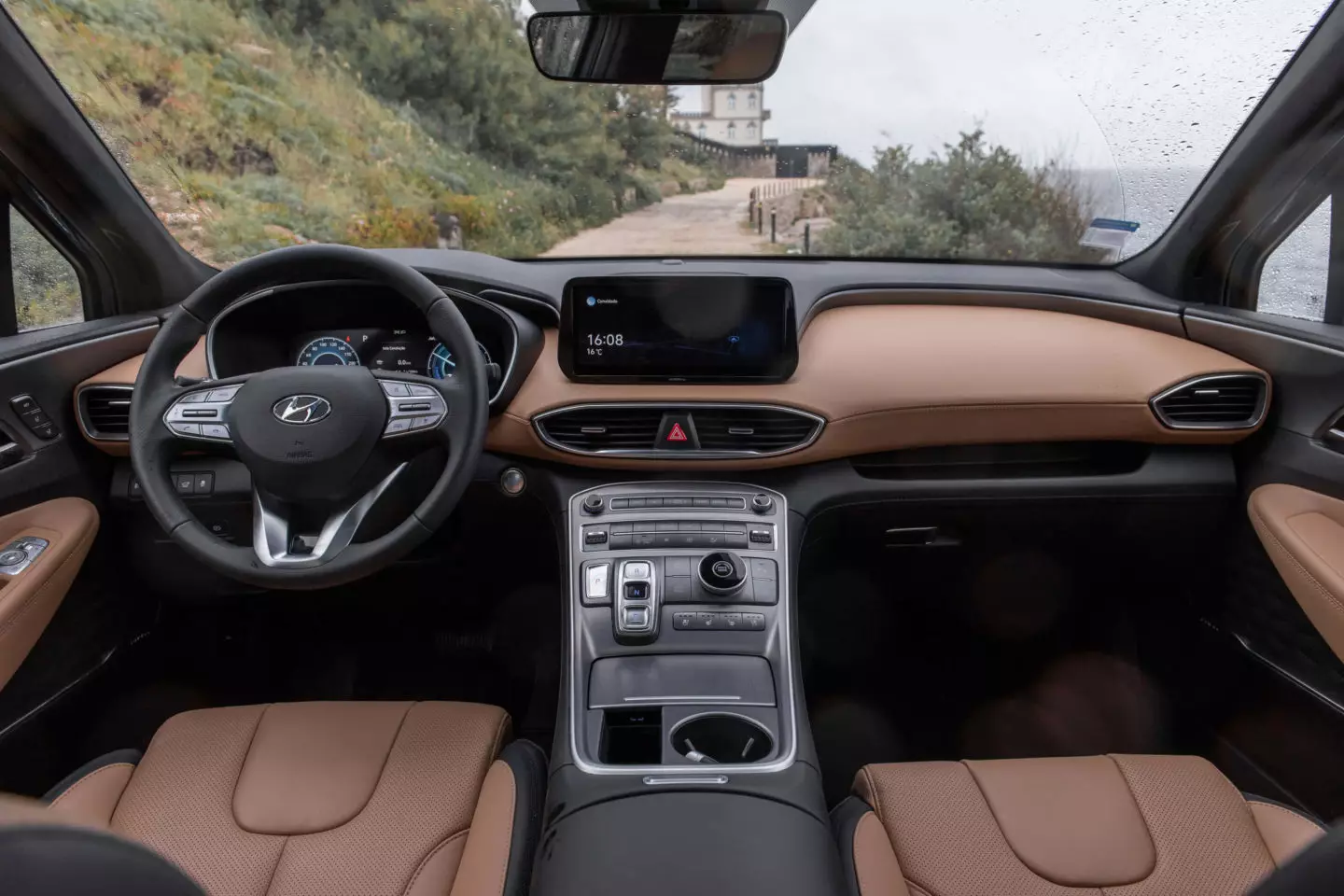
Inside, the atmosphere is even more refined. There are more pleasant materials, the assembly is always in a good plan and in this top version (Vanguard+Luxury Pack) the bicolor decoration gives it a touch of additional refinement.
Traditionally, it is the great trump card of Diesel engines and, truth be told, the 2.2 CRDi also achieves very convincing consumption on the open road, which can go from 5.0 l/100 km on the national road to 7.0-7.5 l/100 km on the highway.
But in the urban fabric, the hybrid doesn't give big chances — thanks to the electric motor —, with consumption around 7.5 l, where Diesel registers values closer to 9.0 l. And as the Santa Fe HEV on the open road was not particularly “greedy”, recording averages of 6.2 l/100 km, it proves to be a credible alternative to the usual Diesel — even so, having a calculator around is always handy, having account of the difference in fuel prices.
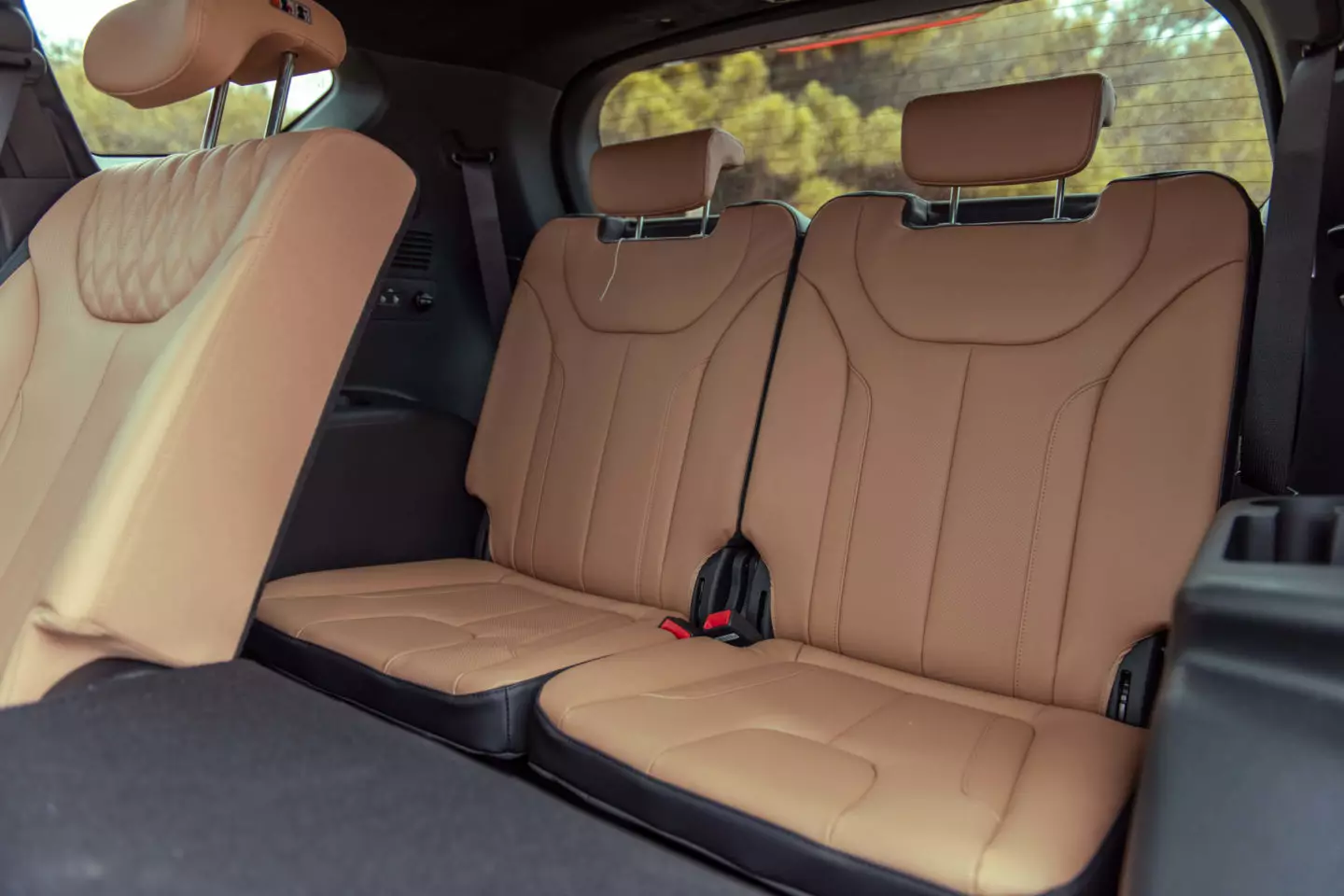
As you'd expect, access to the third row isn't the best, but we have more space back there than other rival SUVs. Especially at shoulder level.
Regardless of the engine chosen, this family SUV from Hyundai is one of the most capable proposals in the segment, offering plenty of space on board — even in the third row, more usable than most rival proposals — and high levels of comfort and competence like family vehicle.
This is accompanied by high levels of quality, both in terms of materials and assembly, and, in the case of the tested versions (top of the range), with a wide range of standard equipment (only metallic paint was optional).
